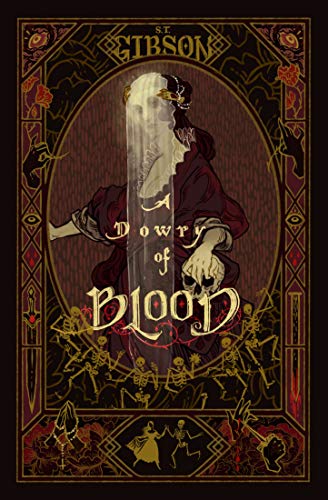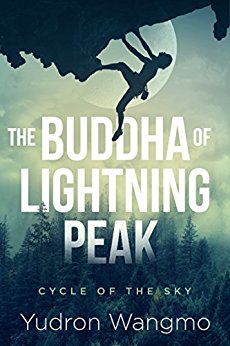Amazon Affiliate Link | Bookshop.org Affiliate Link
If you’re a fan of paranormal retellings, historical fiction, and poetic writing, S.T. Gibson’s A Dowry of Blood is the perfect read.
The novel is an innovative and refreshing retelling of Dracula, told from the perspective of one of Dracula’s three brides—infamous in the novel as the licentious, erotic, lust-filled women who attempt to seduce Johnathan Harker. A Dowry of Blood begins centuries before the events of Stoker’s original novel with Constanta, a Romany woman saved from death by a dark and mysterious stranger who compels her from the beginning. Alternately his bride and daughter, Dracula transforms Constanta, and they embark on a centuries-long life together full of love, pain, treachery, and devotion in equal measure. As the centuries wear on, two other consorts join Constanta, and the controlling and confining machinations of her beloved reach a breaking point.
Gibson’s text is a fantastic addition to the canon of Dracula adaptations. In (re)characterizing Dracula’s brides, the novel seems to also consider the famous iterations of the characters in the original novel and in film (Coppola 1992, Sommers 2004, for example). Moving beyond the events of Stoker’s novel, Gibson’s novel gives a voice to Dracula’s brides as more than sex/blood-obsessed monsters while still maintaining the quintessentially dark, gothic, and horrific aspects of a good vampire novel alongside the telltale eroticism that drives many vampire fictions. It was compelling to see the three brides as more than one moving body of vampiric desire filtered through a male perspective. Instead, each character is distinct and complex, with wants and desires controlled by a domineering controller. Another innovation on Gibson’s part is the transformation of one of the brides into a male figure—Alexi—which complicates and queers the novel in a compelling way.
One startlingly refreshing aspect of Gibson’s text is her portrait of domestic abuse through emotional, physical, sexual, and psychological manipulation. Complex and various over centuries, the story is as much about the oppressed triumphing over the oppressor as it is about vampires and supernatural horror. While Gibson keeps the character of Dracula distant from the text—aloof, cold, and threatening—she recounts the histories and secret strengths of his three brides, centering them within the narrative.
Gibson’s novel emphasises and elaborates on the queerness inherent in Stoker’s original novel. The queer dynamic between the four central characters is crucial in establishing the complex relationship each of them has with Dracula and with one another.
Please visit S.T. Gibson on Twitter and put A Dowry of Blood on your TBR on Goodreads.
Content Warnings: Trauma, emotional abuse, verbal abuse, physical abuse, sexual manipulation.
Rachel Friars is a writer and academic living in Canada, dividing her time between Ontario and New Brunswick. When she’s not writing short fiction, she’s reading every lesbian novel she can find. Rachel holds two degrees in English literature and is currently pursuing a PhD in nineteenth-century lesbian literature and history.
You can find Rachel on Twitter @RachelMFriars or on Goodreads @Rachel Friars.




